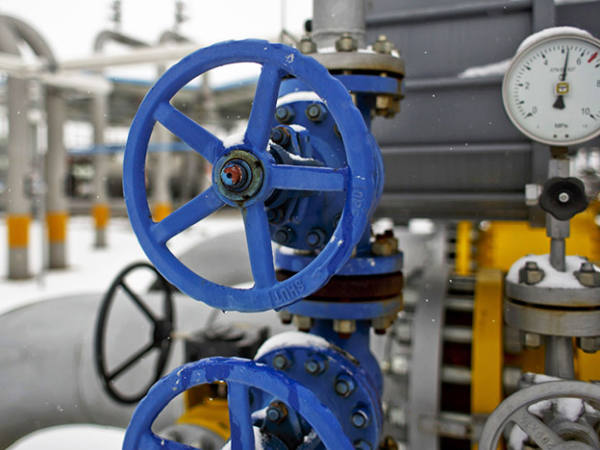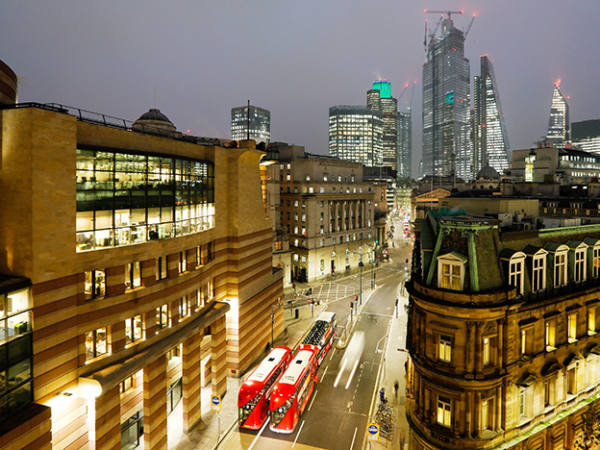A deadly combination of sluggish global economic growth and tumbling commodity prices spelt disaster for the majority of companies specialising in industrial applications last year. Nervy customers reacted to this plethora of headwinds by dumping stock, which led to a widespread squeeze on capital goods investments and the worst set of results for UK engineers since the financial crisis.
What happened?
The sustained rout in crude prices stood out as the biggest headache for engineers in 2015. Ironically, many spent the last few decades moving away from commoditised areas into more specialised niches, only for this strategy to come back and bite them. That's because the majority of these investments went into supplying high-tech seals and valves to the now not so lucrative oil and gas sector.
Projects capable of producing over half a million barrels a day of crude were either cancelled or delayed by Opec, the oil producers' cartel, last year. With that in mind, it should perhaps come as little surprise that the worst-performing shares mainly belonged to those banking on the energy industry to continue running at full throttle.
Many blame waning prosperity in China for the slump in oil prices. As the world's biggest consumer of commodities, economic slowdown across the People's Republic had a relatively big bearing on creating the supply-demand imbalance we read about today. In fact, China was the driving force behind the majority of investments in capital goods over the past decade, which helps to explain why news that it isn't expanding as fast as before prompted a huge sell-off in equities last summer.
To make matters worse, the impact of China's demise quickly rippled across the globe, bringing down even North America, the world's largest economy and another key market for UK industrial engineers. With its key trading partners struggling and the shale bonanza that helped to maintain its economy coming unstuck by a glut in crude demand, manufacturers across the pond soon followed China's lead in reducing inventories.
Diversification pays
Still, against this challenging backdrop of falling industrial production a handful of names somehow managed to deliver. Leading the way was Halma (HLMA), whose focus on markets driven by regulation, safety and health yielded record results. Given that it also manufactures goods at the mercy of the oil and gas industry, this performance shouldn't be underestimated.
While no other company got close to achieving Halma's success (a fact that's reflected in the group's premium rating) some did put in creditable performances under very difficult circumstances. These results show that even in the gloomiest of economic backdrops, money is still being spent in certain fields.
The medical space is worthy of an honourable mention here. Robust demand for eye surgery devices and solutions to deal with obesity and diabetes helped Halma to excel in 2015. And strong uptake for health-related products also played a key role in saving the likes of Renishaw (RSW), Smiths Group (SMIN) and Spectris (SXS) from completely disastrous performances.
Another standout sector was the automotive industry. Despite daily headlines which warn that emerging middle classes in developing nations don't have the money to buy luxury cars, results from the likes of Bodycote (BOY) and GKN (GKN) suggest otherwise.
Capital goods: Growth trends and forecasts
Has the sell-off gone too far?
While there were a few better than expected performances - albeit against some fairly weak expectations - only shares in Halma have risen consistently over the past 12 months. That ultimately begs the question: has the sell-off been too harsh, and is now the time to build up stakes on the cheap?
Judging by the recent recovery of valuations across the sector, many believe this to be the case. Certain portions of the market appear confident that the latest oil price rally is here to stay and that China will start investing again, mainly as a result of government measures.
For example, the People's Bank of China has cut interest rates several times since November 2014 in a bid to revitalise its property sector. Real estate is a closely watched barometer for the Chinese economy because it accounts for around 15 per cent of the nation's gross domestic product. It also happens to be a major source of investment opportunity for western engineers, hence why a recent improvement in prices simultaneously sparked a revival in sentiment towards equities.
This could have wider implications for the oil price, too, which has risen in the past few months off better data from China, lower production figures and Federal Reserve chairwoman Janet Yellen's call for interest rate caution. But there are equally several reasons to be cautious, including the obvious fact that the global oil market still remains substantially oversupplied. Until Opec agrees to freeze production, this is likely to remain an issue.
On top of that are concerns that the Chinese property boom is being fuelled by borrowing rates comparable to those that preceded the US sub-prime crisis. Should either of these justifiable fears be aired out in full, we could be one step away from another major sell-off in equities.
The dividend conundrum
Another factor stopping the shares from falling further comes in the form of inflated dividend yields. In an environment of rock-bottom interest rates, stocks that offer attractive income have never been so popular.
That type of thinking explains why investors have responded so well to the cost-cutting measures introduced throughout the sector. Many believe that closing down factories and axing staff will be sufficient to offset the squeeze on earnings caused by difficult trading conditions. But as the likes of Rolls-Royce (RR.), Dialight (DIA) and Chemring (CHG) have proved in recent months, that's not always the case.
In times of hardship, a sensible option would be to put spare cash towards investing in growth markets. That logic hasn't been missed by some companies, including Rotork (ROR), Spectris, Renishaw and the new management teams at Smiths Group and Morgan Advanced Materials (MGAM).
For others, the only way to fund capital expenditure programmes, beyond cutting even more fat out of businesses, is to axe dividends. During this dark period it's all about surviving and being well positioned to emerge from the downturn. Complicating this rationale is the realisation that ending years of uninterrupted payouts is a sure fire way to risk upsetting those nervy shareholders who have yet to abandon ship.
IC VIEW:
While there are several signs to suggest that the vast tide of destocking may be turning, it's still too early to call whether recent improvements in manufacturing activity are sustainable. Those with an appetite for risk may fancy taking a punt while sentiment remains depressed. But be warned, any further upsets in the coming months could have disastrous implications for share prices, as frustrated shareholders get closer to breaking point.
Favourites:
Not too long ago, investors were lamenting the diversity of Smiths Group's operations. But that was before its profit machine John Crane got hammered by the fall in crude prices and the group's medical and detection arms proved that holding your eggs in more than one basket was actually a good thing. Meanwhile, lower pension contributions should help protect the dividend and provide much needed funds to invest in the latest cutting-edge technology. These better prospects aren't reflected in the share prices, which remains firmly in value territory.
Outsiders:
Investors convinced that Weir (WEIR) has the commodity price downturn under control may well prove mistaken. The maker of pumps used in the mining and oil and gas industries struggled in 2015, as the US shale bonanza ground to a halt and mineral customers reined in spending. With another difficult year in store across key markets, further cost reductions may not be enough to protect the pressured balance sheet. As a result, a dividend cut, or even a rights issue, looks increasingly probable.









